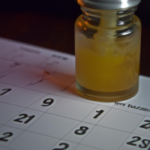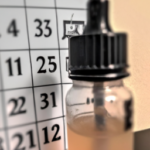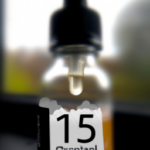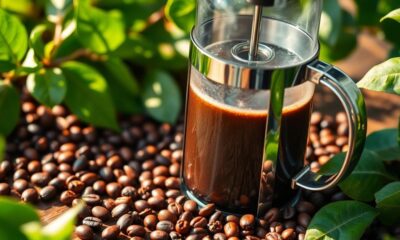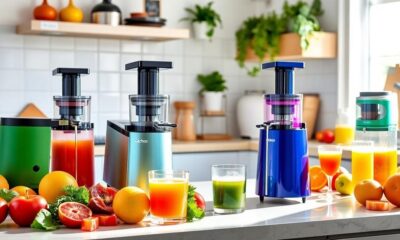Juice Tips and Tricks
How Long Is Vape Juice Good
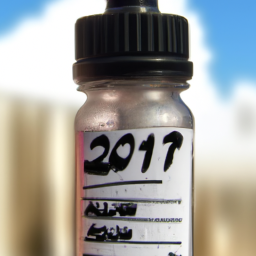
As a vaper, I recognize the importance of using fresh and high-quality e-juice. But how long does vape juice last before it goes bad? In this article, I will discuss the scientific explanation of the shelf life of vape juice, signs of expired e-liquid, and tips to extend its longevity.
Properly storing vape juice is crucial to ensure its longevity. E-liquid can be affected by heat, light, and air exposure, which can cause the flavor and nicotine content to deteriorate. As a result, it’s essential to store vape juice in a cool, dark, and dry place, away from direct sunlight and sources of heat. Additionally, make sure to keep the bottle tightly sealed to prevent air exposure, which can cause oxidation and spoil the e-liquid.
By following these storage guidelines, you can keep your e-liquid fresh and flavorful for longer.
Key Takeaways
- Proper storage is crucial for the longevity of vape juice. Heat, light, and air exposure can deteriorate flavor and nicotine content, so it should be stored in a cool, dark, dry place away from direct sunlight and heat sources, and the bottle should be tightly sealed to prevent air exposure and oxidation.
- There are different types of e-liquid, including Propylene Glycol (PG) and Vegetable Glycerin (VG). VG has a longer lifespan than PG, while PG produces a stronger throat hit and carries flavor better than VG. VG produces bigger clouds and provides a smoother vaping experience.
- Nicotine content affects the overall vaping experience, and overconsumption can lead to negative effects on health.
- The shelf life of vape juice varies depending on whether it is opened or unopened. Unopened vape juice can last up to 2 years, while opened vape juice can last up to 6 months before degrading in quality and flavor. Mixing flavors and utilizing steeping techniques can extend the lifespan and enhance the flavor of vape juice. It is important to check the expiration date and use vape juice with caution, checking its quality through smell and taste tests.
Importance of Properly Storing Vape Juice
If you want to ensure your vape juice remains fresh for as long as possible, you’ll need to store it properly by following proper storage techniques. This means keeping it in a cool and dark place, such as a cupboard or drawer. This helps to prevent the exposure of e-liquid to sunlight and heat, which can cause it to break down and lose its flavor.
Temperature control is also crucial in maintaining the quality of your vape juice. Make sure to avoid storing your e-liquid in a space that is too warm or too cold, as this can also affect its taste and consistency.
Proper storage techniques are essential to maintaining the quality of your vape juice. By keeping your e-liquid in a cool and dark place, you can ensure that it remains fresh for as long as possible. Temperature control is also crucial in preserving the flavor and consistency of your vape juice.
Now that we know how to store our vape juice correctly, let’s take a look at the different types of e-liquid available on the market.
Types of E-Liquid
When it comes to e-liquid, there are two main types: Propylene Glycol (PG) and Vegetable Glycerin (VG).
PG is a thinner liquid that provides a stronger throat hit and carries flavors better, while VG is thicker and produces more vapor.
Additionally, the nicotine content in e-liquid can vary greatly, from nicotine-free options to high levels suitable for heavy smokers.
Propylene Glycol (PG) vs. Vegetable Glycerin (VG)
Although it’s common knowledge that the shelf life of vape juice varies based on several factors, such as the ratio of propylene glycol (PG) to vegetable glycerin (VG), it’s worth noting that VG has a longer lifespan than PG.
PG is commonly used in vape juice as it produces a stronger throat hit and carries flavor better than VG. On the other hand, VG is known for producing bigger clouds and providing a smoother vaping experience. In terms of flavor, PG is better at carrying and enhancing the taste of the e-liquid, while VG creates a sweeter taste due to its natural sweetness.
When it comes to cloud production, VG is the clear winner. It’s thicker and produces more vapor, making it the go-to choice for cloud chasers. However, PG has the advantage of providing a stronger throat hit, which some vapers find preferable. Additionally, PG is known for its ability to extend the lifespan of coils compared to VG.
Vapers who prefer a strong throat hit and don’t mind sacrificing cloud production may opt for a higher PG ratio.
Nicotine content is another crucial factor to consider when it comes to the lifespan of vape juice.
Nicotine Content
Nicotine content greatly affects the overall vaping experience, as it determines the strength of the throat hit and the level of satisfaction obtained from vaping. Here are three ways nicotine affects the body:
-
Nicotine is a highly addictive substance, and it can cause a range of unpleasant withdrawal symptoms when not consumed. These symptoms include irritability, anxiety, and depression, which can make it difficult to quit vaping.
-
On the other hand, nicotine can also have a positive effect on the body, particularly when it comes to cognitive function. Nicotine has been shown to improve memory, attention, and concentration, making it a popular choice among students and professionals alike.
-
However, it’s important to note that nicotine can also be harmful to the body, particularly when consumed in large amounts. Overconsumption of nicotine can lead to nausea, dizziness, and even seizures, so it’s important to use vape juice with caution.
As we’ve seen, nicotine can have both positive and negative effects on the body. But regardless of how you feel about nicotine, it’s important to keep in mind that vape juice does have a shelf life.
Let’s take a closer look at how long vape juice is good for.
Shelf Life of Vape Juice
Hey, you know that bottle of vape juice you’ve had sitting around for months? Yeah, it’s probably time to toss it and get a fresh one because vape juice doesn’t last forever, buddy.
The shelf life of vape juice varies depending on several factors such as the ingredients and how it’s stored. Generally, unopened vape juice can last up to two years while opened vape juice can last up to six months before it starts to degrade in quality and flavor. Proper storage, such as keeping the vape juice in a cool, dark place away from direct sunlight, can help extend its longevity. However, the expiration of vape juice after opening can be influenced by exposure to air, leading to oxidation and a gradual change in flavor and potency. It’s essential to check for any signs of discoloration or unusual odor before use, as these may indicate the vape juice has gone bad.
To ensure your vape juice has a longer shelf life, you need to store it properly. You need to keep it away from direct sunlight and heat as these can cause the vape juice to break down faster. It’s also important to keep it in a cool place with a stable temperature. If you want to extend the shelf life of your vape juice, consider storing it in a cool dark place like a pantry or a closet.
With these tips, you can enjoy your vape juice for a longer period without sacrificing flavor and quality. But, how do you know if your vape juice has gone bad? Let’s move on to the next section to find out.
Signs Your Vape Juice Has Gone Bad
To make sure you’re vaping only the best, it’s important to know the signs that your e-liquid has gone bad. Here are some ways to tell if your vape juice has expired:
-
If your vape juice has changed color, it may have gone bad. E-liquids are typically clear or slightly tinted, so if you notice a darker or cloudy appearance, it’s time to replace it.
-
Vape juice should have a pleasant aroma, but if it smells off or rancid, it’s likely that it has gone bad.
-
If your e-liquid has a burnt or metallic taste, it may be expired. Vape juice that has gone bad can also taste stale or sour.
Using expired vape juice can have negative effects on your vaping experience. Not only will it taste bad, but it can also cause irritation to your throat and lungs. To prevent this, it’s important to store your vape juice properly and use it before it expires.
In the next section, we’ll discuss some tips for extending the lifespan of your e-liquid.
Tips for Extending the Lifespan of Vape Juice
Like a fine wine, taking care of your e-liquid can enhance the flavor and extend its lifespan. One way to extend the lifespan of your vape juice is to mix flavors. Mixing flavors can not only create unique and exciting taste combinations, but it can also help to dilute any harsh flavors that may have developed over time. However, it’s important to mix flavors correctly to avoid any negative effects on the quality of the e-liquid.
It’s recommended to mix flavors from the same manufacturer and to mix flavors with similar nicotine strengths.
Another way to extend the lifespan of your vape juice is through steeping techniques. Steeping is the process of letting the e-liquid sit for a period of time to allow the flavors to blend together and mature. This process can enhance the flavor and make it smoother. There are different types of steeping techniques, such as natural steeping, heat steeping, and ultrasonic steeping. It’s important to research and choose the appropriate steeping technique for your specific e-liquid.
By mixing flavors and utilizing steeping techniques, you can extend the lifespan of your vape juice and enhance its flavor. However, it’s important to know how to tell if your vape juice is still good, which we’ll discuss in the subsequent section.
How to Tell if Vape Juice is Still Good
It’s crucial to ensure the quality of your e-liquid before vaping, as a bad batch can ruin your experience and potentially harm your health. Here are some tips on how to tell if your vape juice is still good:
-
Smell test: If your e-liquid has a strange or unpleasant odor, it’s a sign that it may have gone bad. A fresh batch of vape juice should have a subtle aroma that matches its flavor profile.
-
Taste test: The best way to determine if your e-liquid is still good is by doing a taste test. If the flavor is muted or has a harsh, burnt taste, it’s an indication that it’s time to replace your vape juice.
-
Expiration date: Always check the expiration date of your vape juice. While e-liquid can last up to two years if stored correctly, it’s best to discard it after the expiration date has passed.
Before moving on to DIY e-liquid, it’s essential to know how to tell if your vape juice is still good. By performing a smell and taste test and checking the expiration date, you can ensure the quality of your e-liquid and enjoy a safe and satisfying vaping experience.
DIY E-Liquid
If you’re feeling adventurous and want to customize your vaping experience, DIY e-liquid may be the next step for you. DIY e-liquid involves mixing your own ingredients to create unique flavor combinations. The process requires precision and careful measurement to ensure that the final product is safe and enjoyable to use.
To begin making your own e-liquid, you’ll need to gather the necessary ingredients, including PG (propylene glycol), VG (vegetable glycerin), nicotine, and flavorings. You’ll then need to mix these ingredients together in the correct ratios, taking care to measure accurately.
DIY e-liquid can be a fun and rewarding experience, but it’s important to follow safety guidelines and use caution when handling nicotine.
As you venture into the world of DIY e-liquid, it’s important to keep in mind the health concerns associated with vaping. While vaping is generally considered safer than smoking traditional cigarettes, there are still potential risks associated with the use of nicotine and other chemicals. It’s important to stay informed and make responsible choices when it comes to your vaping habits.
Vape Juice and Health Concerns
When it comes to the health concerns associated with vaping, being informed and making responsible choices is crucial. One of the major concerns is the effect of vape juice on pregnancy. Nicotine, which is present in most vape juices, can have adverse effects on fetal development and increase the risk of premature birth, low birth weight, and sudden infant death syndrome.
Additionally, the chemicals in e-liquids can potentially harm the developing fetus and may even affect future health outcomes. Another concern is the impact of vaping on lung health. Vaping can cause lung irritation and inflammation, leading to symptoms such as coughing, wheezing, and shortness of breath.
There have also been cases of severe lung injury associated with vaping, with symptoms including chest pain, fever, and difficulty breathing. It’s crucial to note that while the long-term effects of vaping are still being studied, the potential risks aren’t worth taking lightly.
With these health concerns in mind, it’s important to properly dispose of expired vape juice to prevent potential harm to individuals and the environment.
Proper Disposal of Expired Vape Juice
Now that we’ve discussed the health concerns surrounding expired vape juice, let’s delve into the proper disposal of it.
It’s important to note that throwing away expired vape juice in the trash or pouring it down the drain can have harmful environmental impacts.
Proper disposal of expired vape juice involves finding a hazardous waste disposal facility or contacting your local government for guidance on where to dispose of it.
These facilities are equipped to handle hazardous materials and will ensure that the vape juice is disposed of in an environmentally responsible manner.
By taking the time to properly dispose of expired vape juice, we can help minimize the negative impact it could have on our environment.
Frequently Asked Questions
Can vape juice go bad if it’s never opened?
Yes, vape juice can go bad even if it’s never opened, depending on its shelf life and storage conditions. Exposure to heat, light, and air can cause the ingredients to break down and expire over time.
Can I mix different types of e-liquid together?
Mixing different e-liquid flavors together can create unique and enjoyable flavor combinations. However, it’s important to make sure the flavors complement each other and don’t clash. Experimenting with small amounts is recommended to find the perfect mix.
Is it safe to vape expired vape juice?
Vaping expired vape juice may pose potential risks to one’s health due to chemical changes over time. These changes can affect the flavor, consistency, and potency of the liquid, potentially causing harmful effects on the body.
How does temperature affect the shelf life of vape juice?
Temperature control has a significant impact on the shelf life of vape juice. Exposure to high temperatures can cause the liquid to break down and lose flavor potency, resulting in an unpleasant vaping experience. Proper storage in a cool, dry place is essential for maintaining the quality of the juice.
Can I reuse empty vape juice bottles for DIY e-liquid?
I was surprised to learn that over 60% of DIY e liquid recipes require the use of cleaned vape juice bottles. To properly clean them, rinse with warm water and then soak in high-proof alcohol for 10-15 minutes.
Conclusion
In conclusion, taking care of your vape juice is like taking care of a delicate flower. You need to give it the right amount of sunlight, water, and nutrients for it to thrive.
Properly storing your e-liquid, choosing the right type for your device, and paying attention to its shelf life are all essential steps to ensure the quality and safety of your vaping experience.
Just like a flower, your vape juice can also wilt and lose its potency over time. But with a little bit of knowledge and effort, you can extend its lifespan and avoid any health concerns or unpleasant tastes.
By following the tips and tricks we’ve discussed in this article, you can enjoy your e-cigarette without any worries and savor the flavors and sensations it offers. Happy vaping!
Cindy thoroughly researches juicing trends, techniques, and recipes to provide readers with practical advice and inspiration. Her writing style is accessible, engaging, and designed to make complex concepts easy to understand. Cindy’s dedication to promoting the advantages of juicing shines through her work, empowering readers to make positive changes in their lives through the simple act of juicing.
Juice Tips and Tricks
How to Make Aloe Vera Juice Taste Better

Tired of the strong flavor of aloe vera juice? No problem, we’ve got the answer for you.
In this article, we’ll share some tips and tricks to make your aloe vera juice taste better. We have tried and tested various methods to enhance the flavor without compromising the health benefits.
From choosing the right juice to adding natural sweeteners and infusing with fruits and herbs, we’ve got all the information you need to transform your aloe vera juice into a delightful and refreshing beverage.
Let’s dive in!
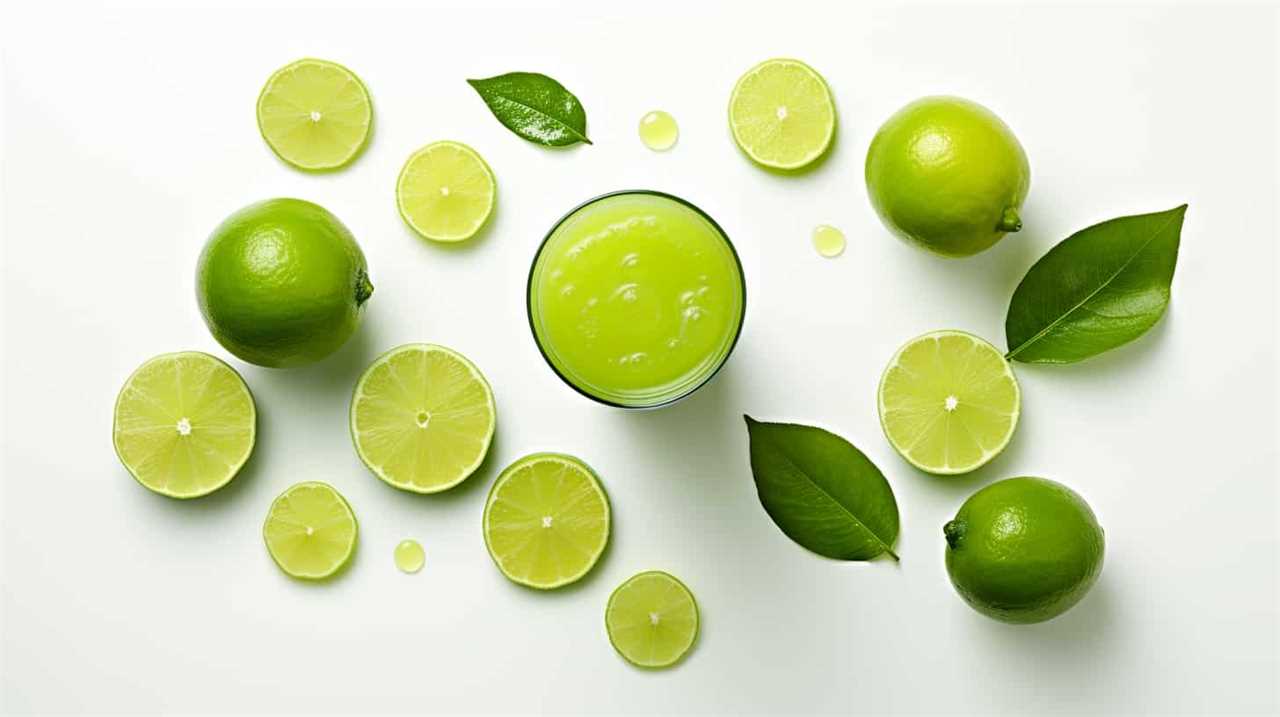
Key Takeaways
- Choose a reputable brand of aloe vera juice that prioritizes quality and uses organic, pure aloe vera.
- Avoid brands that contain added sugars or artificial ingredients.
- Use natural sweeteners like honey, agave syrup, or stevia to enhance the taste of aloe vera juice.
- Experiment with adding fruits, herbs, and other juices to create unique flavor combinations and enhance the health benefits of aloe vera juice.
Choosing the Right Aloe Vera Juice
We can enhance our experience with aloe vera juice by selecting the right brand and type for our preferences. When it comes to finding a reputable brand, it’s important to do some research and read reviews from other consumers. Look for brands that prioritize quality and use organic, pure aloe vera without any added sugars or artificial ingredients. Understanding the health benefits of aloe vera juice is also crucial in making the right choice. Aloe vera is known for its soothing properties, aiding digestion, promoting skin health, and boosting the immune system. By choosing a high-quality brand, we can ensure that we’re getting the maximum benefits from our aloe vera juice.
Now that we know how to choose the right brand, let’s move on to the next step of adding natural sweeteners.
Adding Natural Sweeteners
To enhance the flavor of our aloe vera juice, we can add natural sweeteners such as honey or agave syrup. Using alternative sweeteners not only adds sweetness but also brings unique flavors to the juice. Here are some options to consider:
- Stevia: A natural sweetener derived from the Stevia plant, it’s a zero-calorie alternative to sugar.
- Maple Syrup: This natural sweetener adds a rich and earthy flavor to the aloe vera juice.
- Dates: Pureed dates can be used to sweeten the juice while also providing essential nutrients like fiber.
In addition to using alternative sweeteners, we can enhance the flavor of aloe vera juice by adding spices and extracts. Cinnamon, ginger, or vanilla extract can add warmth and depth to the taste. By experimenting with different combinations of these natural sweeteners, spices, and extracts, we can create a flavor profile that suits our preferences.
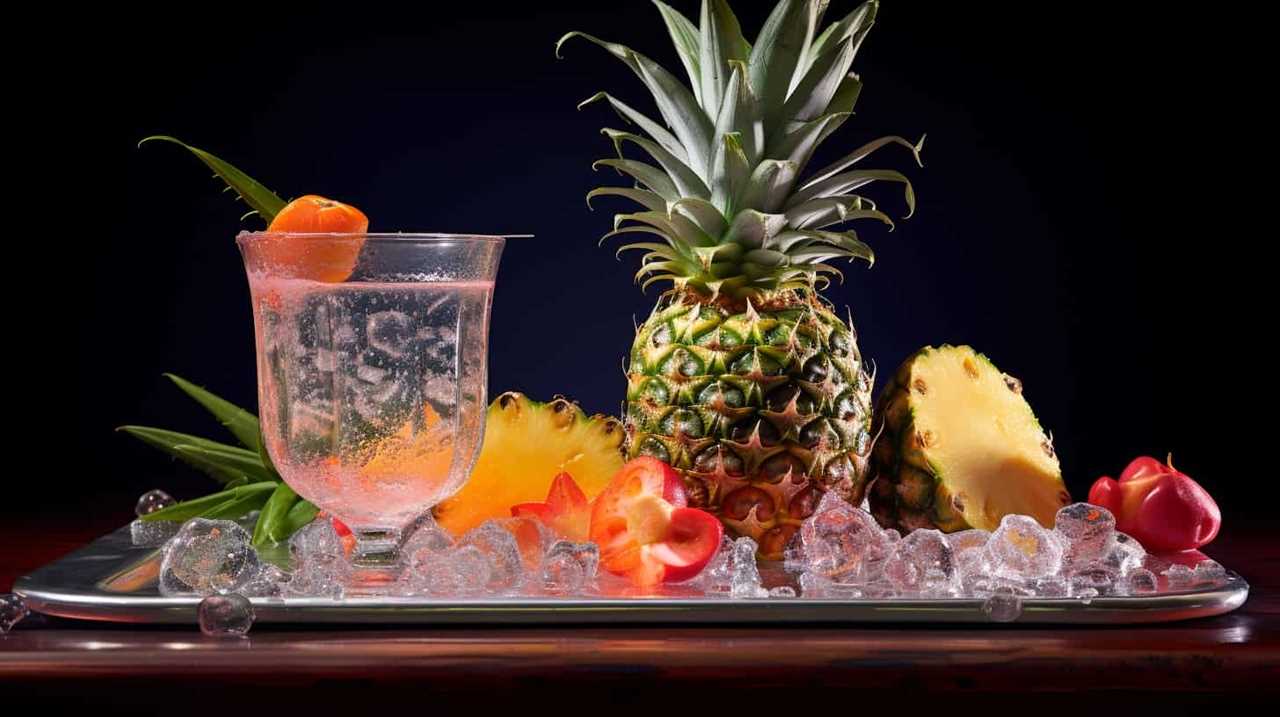
Now, let’s move on to the next section and learn how to infuse aloe vera juice with fruits and herbs to further enhance its taste.
Infusing With Fruits and Herbs
As we explore ways to make our aloe vera juice taste better, one option to consider is infusing it with fruits and herbs. Creating unique aloe vera blends by adding fruits and herbs not only enhances the flavor but also adds a touch of freshness and complexity to the juice. For example, combining aloe vera juice with lemon, mint, or berries can create a refreshing drink that’s both delicious and packed with additional nutrients. It’s similar to the ease of making lemonade with bottled juice—quick, convenient, and customizable to suit your preferences. By experimenting with different fruit and herb combinations, you can elevate your aloe vera juice experience while still reaping its health benefits.
Fruits like strawberries, pineapple, or citrus can add a burst of sweetness, while herbs like mint, basil, or ginger can provide a subtle yet refreshing twist. Exploring the benefits of herbal infusions can also be beneficial for our health. For example, adding a few sprigs of lavender can promote relaxation and reduce stress. Additionally, infusing aloe vera juice with rosemary can aid digestion and boost the immune system.
Blending With Other Juices
Let’s try mixing aloe vera juice with different fruit juices to create delicious and refreshing blends. Blending aloe vera juice with other fruits not only enhances its taste but also adds nutritional benefits to your drink. Here are three fruit juices that you can mix with aloe vera juice:

- Orange juice: Combining aloe vera juice with orange juice not only adds a tangy flavor but also boosts your intake of vitamin C, which is essential for a strong immune system.
- Pineapple juice: Mixing aloe vera juice with pineapple juice creates a tropical blend that isn’t only refreshing but also helps in digestion. Pineapple contains bromelain, an enzyme that aids in breaking down proteins and promoting better digestion.
- Watermelon juice: Blending aloe vera juice with watermelon juice creates a hydrating and refreshing combination. Watermelon is rich in water content and contains electrolytes that can help replenish your body’s fluids.
Experimenting With Flavor Combinations
While we can try various flavor combinations with aloe vera juice, it’s important to find the right balance to enhance its taste. Experimenting with different flavors can’t only make the juice more enjoyable but also enhance its health benefits.
Aloe vera juice is known for its numerous health benefits, such as boosting digestion, promoting hydration, and supporting the immune system. By adding complementary flavors, we can create a refreshing summer drink that not only tastes great but also provides a nutritional boost.
Some popular flavor combinations include mixing aloe vera juice with citrus fruits like lemon or orange, adding a splash of coconut water for a tropical twist, or combining it with cucumber and mint for a refreshing and cooling effect.
Don’t be afraid to get creative and find the flavor combination that suits your taste buds best!
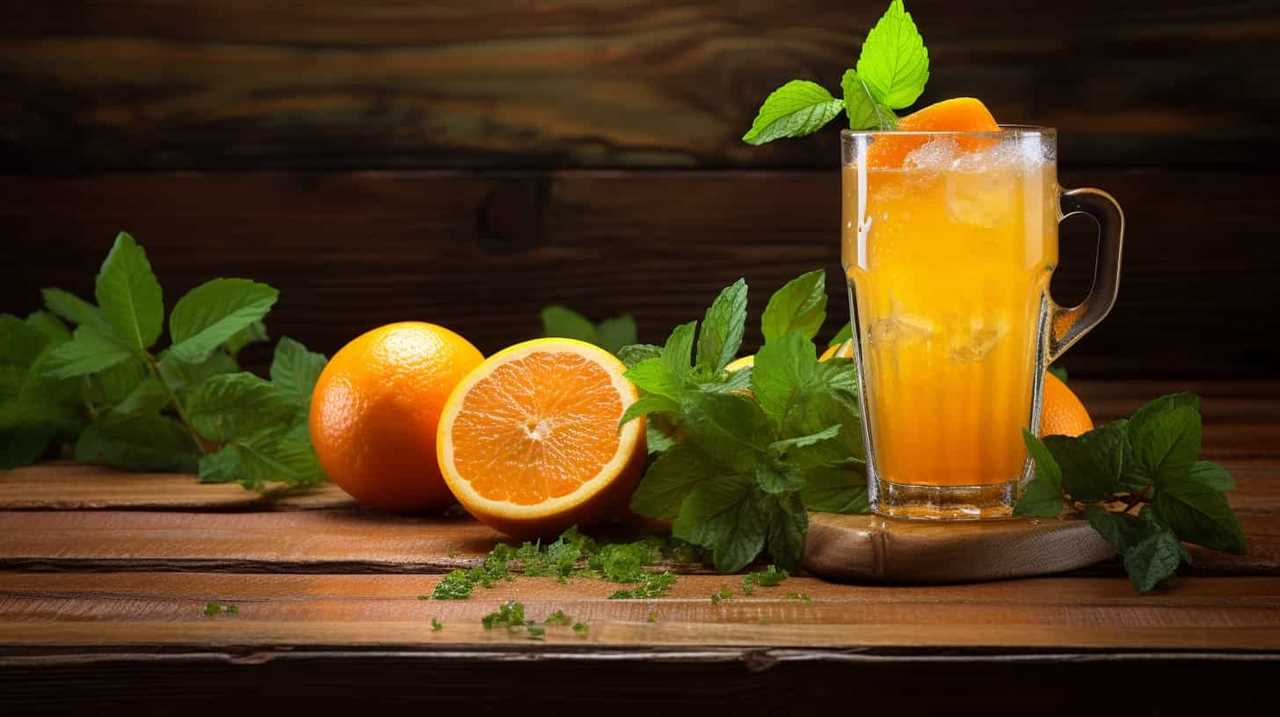
Frequently Asked Questions
Can I Use Store-Bought Aloe Vera Gel Instead of Fresh Aloe Vera for Making Juice?
Yes, you can use store-bought aloe vera gel instead of fresh aloe vera for making juice. However, it’s important to note that fresh aloe vera juice may have more health benefits due to its higher nutrient content.
How Long Can I Store Aloe Vera Juice in the Refrigerator?
Aloe vera juice can be stored in the refrigerator for up to a week. Refrigeration helps maintain the longevity and freshness of the juice, preserving its beneficial properties. It’s important to store the juice in an airtight container to prevent contamination and maintain its quality. Similarly, you might wonder *how long ginger juice lasts*; typically, fresh ginger juice can be refrigerated for about 1–2 weeks as well. Both aloe vera and ginger juices are best consumed within their shelf life to ensure maximum potency and health benefits. Additionally, freezing either juice can extend their shelf life, though some loss of nutrients and potency may occur during the process. When thinking about *how long fresh juice lasts*, it’s crucial to check for signs of spoilage, such as changes in smell, taste, or color, before consuming. To enjoy the best results, it’s always recommended to use fresh ingredients and properly store the juice to ensure you’re getting the most out of its health benefits.
Can Aloe Vera Juice Help With Digestive Issues?
Aloe vera juice can potentially help with digestive issues when taken in appropriate dosages. However, it is important to note that there may be potential side effects. It is always best to consult with a healthcare professional before starting any new supplement regimen.
Can I Use Artificial Sweeteners Instead of Natural Sweeteners in My Aloe Vera Juice?
Using artificial sweeteners in aloe vera juice may affect its taste and potential health benefits. However, natural sweeteners like honey or stevia can enhance the flavor without compromising its nutritional value.

Is It Safe to Drink Aloe Vera Juice Every Day?
Drinking aloe vera juice daily can have numerous benefits, such as improving digestion and boosting the immune system. However, consuming it regularly may also lead to potential side effects like diarrhea or stomach cramps.
Conclusion
In conclusion, making aloe vera juice taste better is easy and enjoyable.
By choosing the right aloe vera juice and adding natural sweeteners, infusing with fruits and herbs, blending with other juices, and experimenting with flavor combinations, you can create a delightful and refreshing drink.
So go ahead and unleash your creativity in the kitchen, and transform your aloe vera juice into a sensational elixir that will transport your taste buds to paradise.
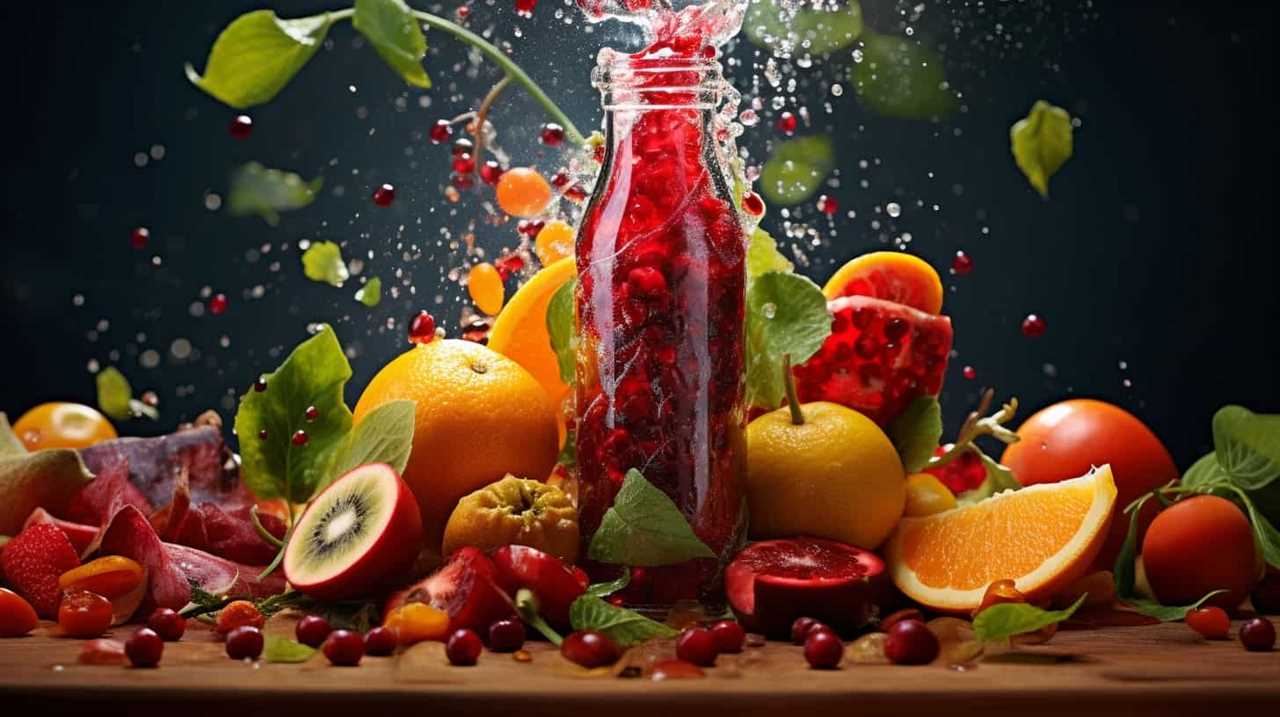
Susannah expertise lies in researching and compiling evidence-based content on juicing, nutrition, and overall health. She is committed to ensuring that The Juicery World offers accurate, up-to-date, and trustworthy information to empower readers to take control of their health. Susannah’s goal is to inspire individuals to embrace juicing as a way to nourish their bodies and live their best lives.
Juice Tips and Tricks
How to Make a Glass of Lemonade With Bottled Lemon Juice
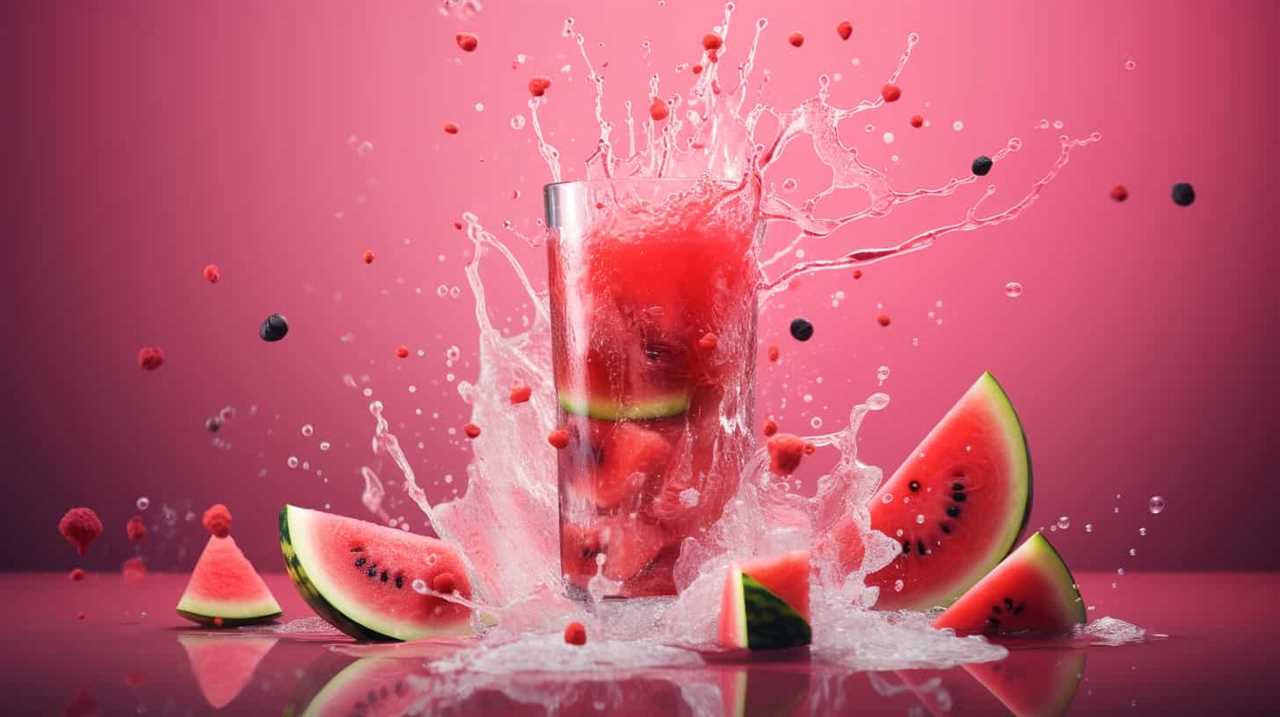
Are you craving a cool glass of lemonade to quench your thirst? Look no further! Try out our perfect recipe using bottled lemon juice that will surely please your taste buds.
In this article, we’ll guide you through the process of creating a tangy and sweet concoction that will leave you feeling refreshed and satisfied.
So grab your ingredients and let’s get started on this delightful journey of serving ourselves and others a glass of pure lemony goodness.
Key Takeaways
- Consider the storage of the bottled lemon juice (dark glass or plastic bottles, protect from light exposure, check expiration date)
- Choose a suitable pitcher and fresh lemons for enhanced flavor
- Store the lemonade concentrate in the refrigerator to maintain freshness
- Adjust the sweetness and tartness to taste with sugar or more lemon juice, and experiment with different sweeteners or additional flavors.
Choosing the Right Bottled Lemon Juice
What are the key factors we should consider when selecting the right bottled lemon juice for our lemonade?

One important factor is how the lemon juice is stored. Look for bottles that are made of dark glass or plastic, as they help protect the juice from light exposure, which can degrade its quality. It’s also important to check the expiration date to ensure freshness.
Another benefit of using bottled lemon juice is convenience. It saves time and effort compared to squeezing fresh lemons. Additionally, bottled lemon juice provides consistent flavor, as the acidity levels are standardized.
When selecting a brand, consider reading reviews and checking for certifications, such as organic or non-GMO.
Gathering the Necessary Ingredients and Tools
How can we gather all the necessary ingredients and tools to make a glass of lemonade with bottled lemon juice? First, we’ll need to collect bottled lemon juice, sugar, and cold water, as well as a pitcher and a spoon for mixing. If you prefer extra flavor, you can also gather ice and optional add-ins like mint or soda water. While preparing the lemonade, it’s easy to understand why some people wonder about other citrus drinks and may ask, “how many oranges per gallon” are needed when making orange juice instead. Once everything is assembled, combine the lemon juice, sugar, and water in the pitcher, stirring until the sugar dissolves. Feel free to adjust the sweetness or tartness to your liking, and don’t forget to add ice or any optional add-ins for an extra refreshing touch. This process might even make you curious about how much juice from oranges is needed when making fresh orange juice compared to using bottled citrus products. Once your lemonade is ready, pour it into a glass and enjoy the refreshing taste. This simple recipe can inspire you to try other homemade juices, such as learning **how to make pear juice** or experimenting with other fruit combinations. Whether you’re using fresh fruits or bottled options, creating your own beverages is a fun and rewarding way to personalize your drinks.
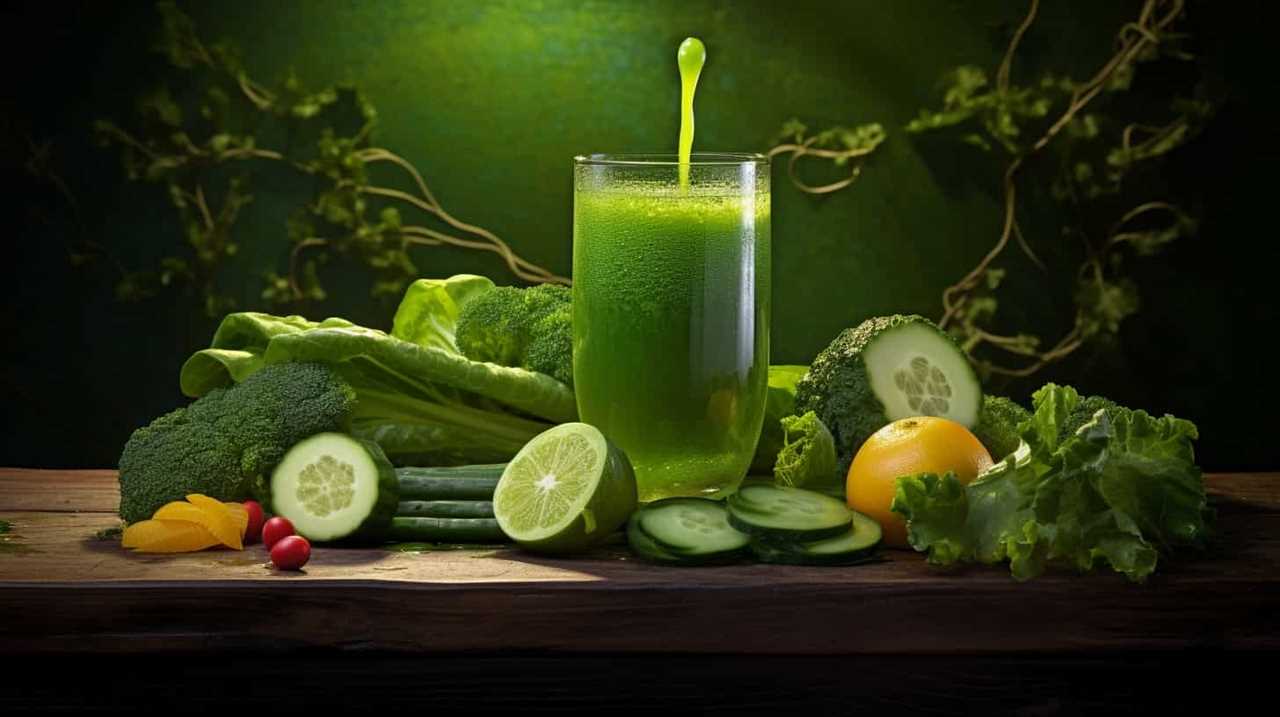
It’s important to start with the right pitcher. Look for a pitcher that’s made of glass or BPA-free plastic, as these materials won’t affect the taste of the lemonade. The pitcher should also have a lid or cover to keep the lemonade fresh and prevent spills.
Now, let’s talk about the lemons. While bottled lemon juice is convenient, using fresh lemons instead can elevate the flavor of your lemonade. Choose lemons that are firm and have a bright yellow color. Give them a gentle squeeze to ensure they’re juicy. To extract the juice, you’ll need a citrus juicer or a reamer. These tools make it easy to get every last drop of juice from the lemons.
Mixing the Lemonade Concentrate
To start mixing the lemonade concentrate, we’ll slowly pour the bottled lemon juice into the pitcher. It’s important to choose the right container for the lemonade concentrate. A pitcher with a lid or a tightly sealed container will help maintain the freshness and prevent any spills or leaks. Once the lemon juice is in the pitcher, we can move on to the next step of adding water and sweetener.
To ensure the lemonade concentrate stays fresh, it’s essential to store it properly. Keep the pitcher in the refrigerator to maintain its cool temperature and prevent any bacteria growth. If you have any leftover concentrate, transfer it to a smaller container with an airtight lid before refrigerating. This will help retain its flavor and prevent any contamination.
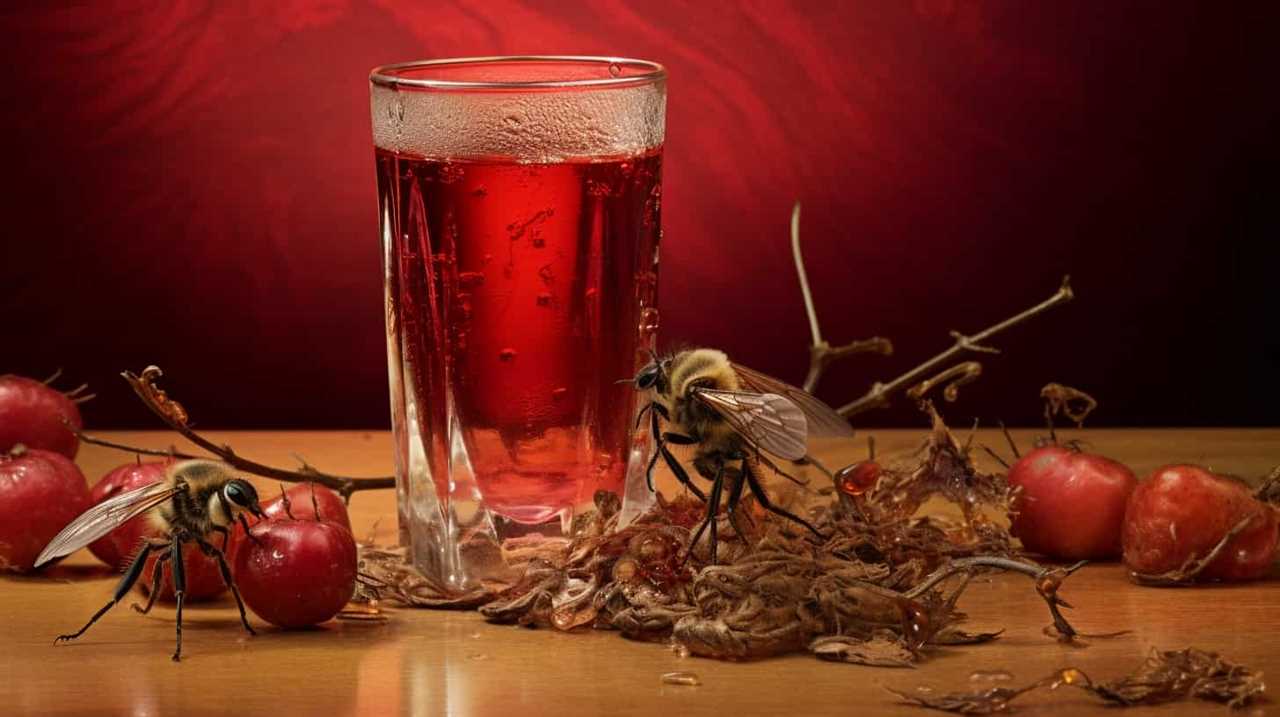
Now that we’ve mixed the lemonade concentrate, it’s time to adjust the sweetness and tartness to taste.
Adjusting the Sweetness and Tartness to Taste
We can adjust the sweetness and tartness of the lemonade to taste by adding more sugar or lemon juice, respectively. If you prefer a sweeter lemonade, simply add more sugar and stir until it dissolves completely. You can experiment with different sweeteners such as honey or agave syrup to find the perfect balance of sweetness.
On the other hand, if you want a tangier lemonade, add more lemon juice gradually, tasting as you go until it reaches your desired level of tartness.
Additionally, you can get creative with your lemonade by adding flavors like fresh mint leaves or a hint of lavender. These additions can elevate the flavor profile and create a more refreshing and unique experience.
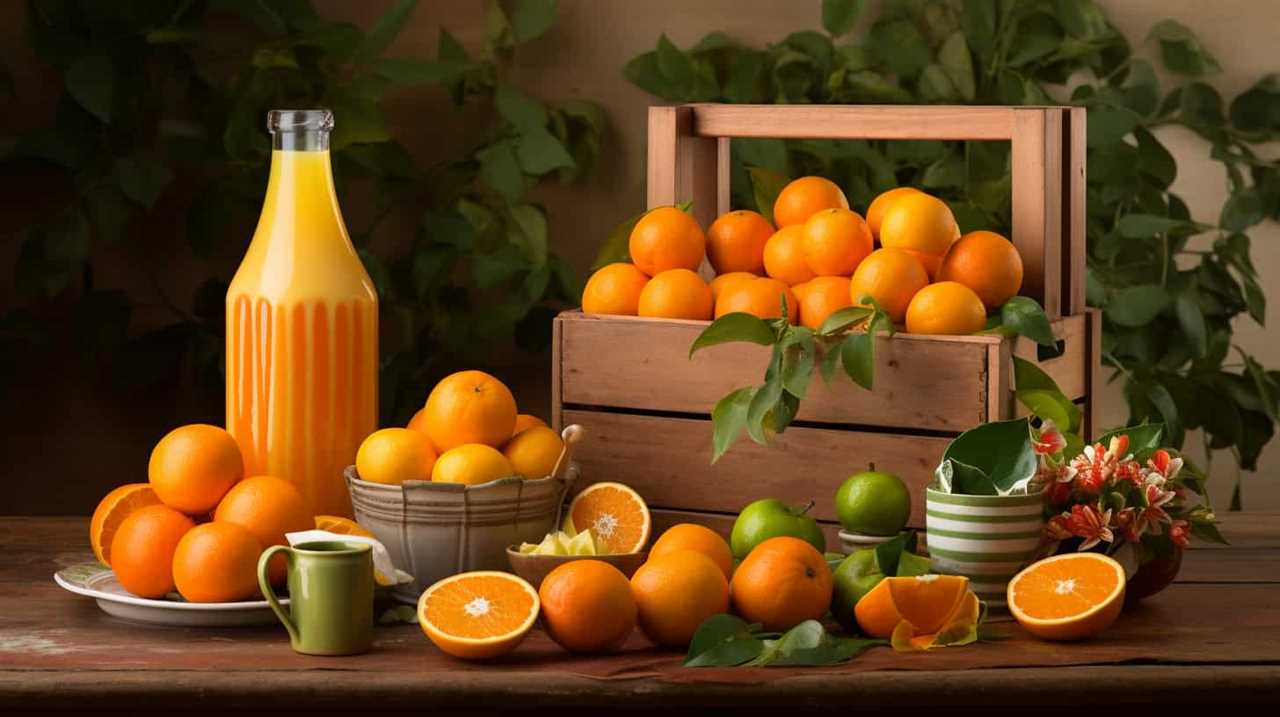
Now that we’ve adjusted the sweetness and tartness of our lemonade, let’s move on to serving and enjoying your refreshing glass of lemonade.
Serving and Enjoying Your Refreshing Glass of Lemonade
Now let’s sit back, relax, and savor our refreshing glass of lemonade.
When it comes to serving and enjoying this delightful drink, there are a few techniques and garnishing options to consider.
Firstly, serving your lemonade chilled is essential for maximum enjoyment. Ensure that you have chilled glasses or add ice cubes to the glasses before pouring the lemonade.

To add a touch of elegance, you can garnish your lemonade with a slice of lemon on the rim of the glass. For an extra burst of flavor, you could also add a sprig of fresh mint or a few berries.
Remember to gently stir the lemonade before serving to evenly distribute the flavors.
Now, take a sip, feel the refreshing tang of lemon, and let the sweet and tart flavors dance on your taste buds.
Cheers!
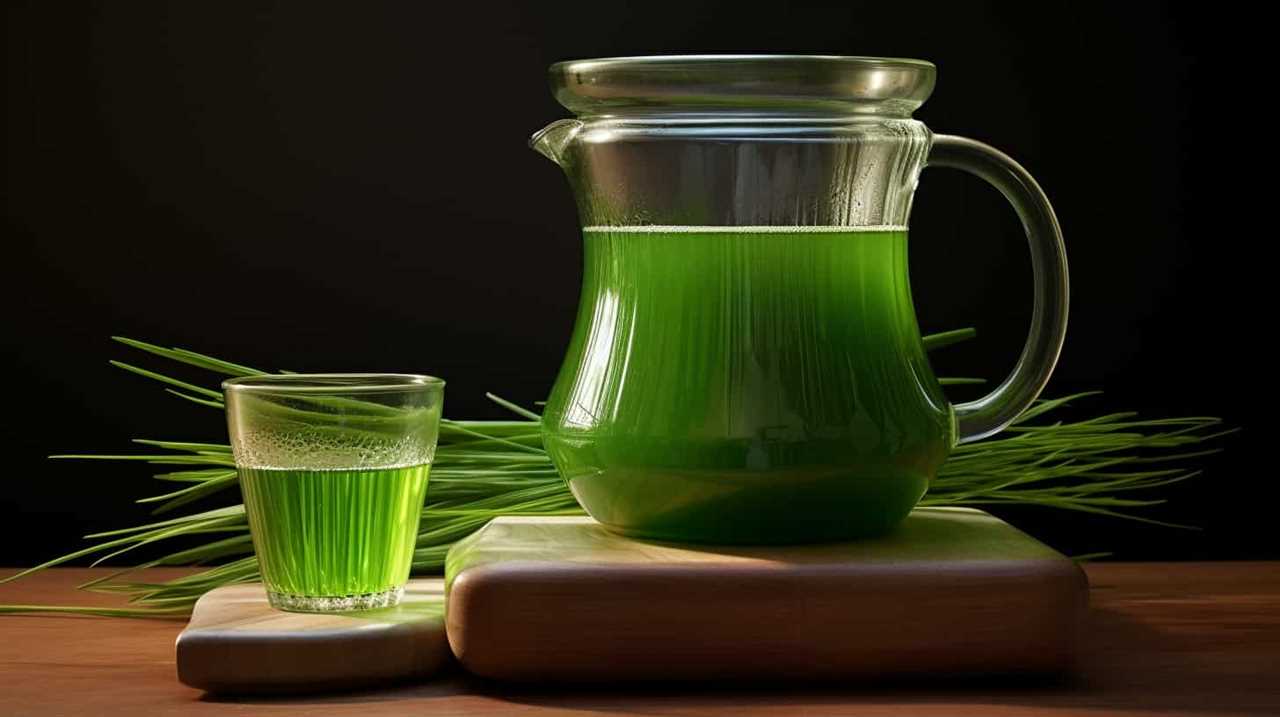
Frequently Asked Questions
Can I Use Fresh Lemons Instead of Bottled Lemon Juice?
Fresh lemons offer numerous benefits over bottled lemon juice. The taste of fresh lemons is unparalleled, providing a vibrant and tangy flavor. Incorporating fresh lemons into your lemonade will elevate its taste and give it a refreshing and authentic twist.
Can I Substitute Sugar With a Different Sweetener?
Substituting sweeteners in lemonade can enhance the flavor and offer health benefits. We’re knowledgeable about alternative sweeteners and can provide precise, detailed instructions on using them in place of sugar.
How Long Does the Lemonade Concentrate Need to Chill in the Refrigerator?
The chilling time for the lemonade concentrate in the refrigerator is typically around 1-2 hours. Using bottled lemon juice offers the benefit of convenience and consistent flavor for a refreshing glass of lemonade.
Can I Add Other Fruits or Flavors to the Lemonade?
Sure, we can definitely add different fruits or flavors to our lemonade. It’s a great way to experiment with unique flavors and create refreshing, personalized drinks. The possibilities are endless!

How Long Does the Lemonade Stay Fresh in the Refrigerator?
Lemonade made with bottled lemon juice can stay fresh in the refrigerator for about 5-7 days. To maximize shelf life, store it in an airtight container and keep it chilled.
Conclusion
And so, with a few simple steps and the right ingredients, a glass of refreshing lemonade is born.
Like a symphony of flavors dancing on your taste buds, this tangy elixir quenches thirst and brings joy on a hot summer day.
Just a sip transports you to a world of citrusy delight, where the sweetness and tartness blend harmoniously.

So go ahead, indulge in the art of lemonade-making and savor every drop of this sun-kissed nectar.
Cheers to the perfect glass of lemonade!
Susannah expertise lies in researching and compiling evidence-based content on juicing, nutrition, and overall health. She is committed to ensuring that The Juicery World offers accurate, up-to-date, and trustworthy information to empower readers to take control of their health. Susannah’s goal is to inspire individuals to embrace juicing as a way to nourish their bodies and live their best lives.
Juice Tips and Tricks
How to Know if Orange Juice Is Bad
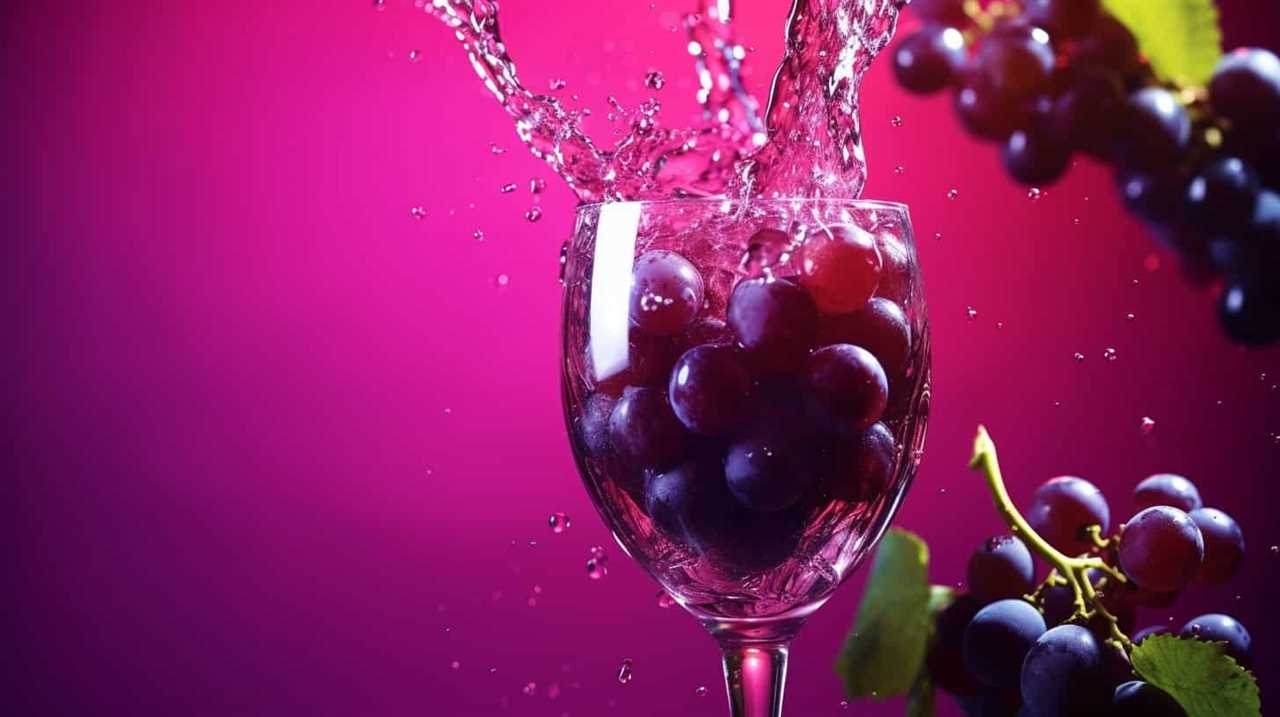
We’ve all been in that situation before – reaching for a glass of orange juice and hesitating, unsure if it’s still okay to drink. Fear not! This article will give you the knowledge you need to determine for sure if your orange juice is still fresh or if it’s gone bad.
With a blend of scientific precision and practical tips, we’ll explore color changes, strange smells, off taste, texture changes, and mold or growth that may indicate spoilage.
Let’s dive in and serve ourselves a refreshing glass of certainty!
Key Takeaways
- Color changes in orange juice can indicate a loss of freshness and shelf life extension, but it doesn’t necessarily mean the juice is bad.
- Unusual or off-putting odors in orange juice, such as sour or fermented scents, can be a sign of poor quality.
- An off taste in orange juice, such as sour, bitter, or fermented flavors, suggests that the juice is spoiled.
- Texture changes in orange juice, such as pulp separation or a thicker consistency, can occur as the juice ages, so it’s important to consume it before the expiration date.
Color Changes in Orange Juice
We should be aware that color changes can indicate whether orange juice is bad.
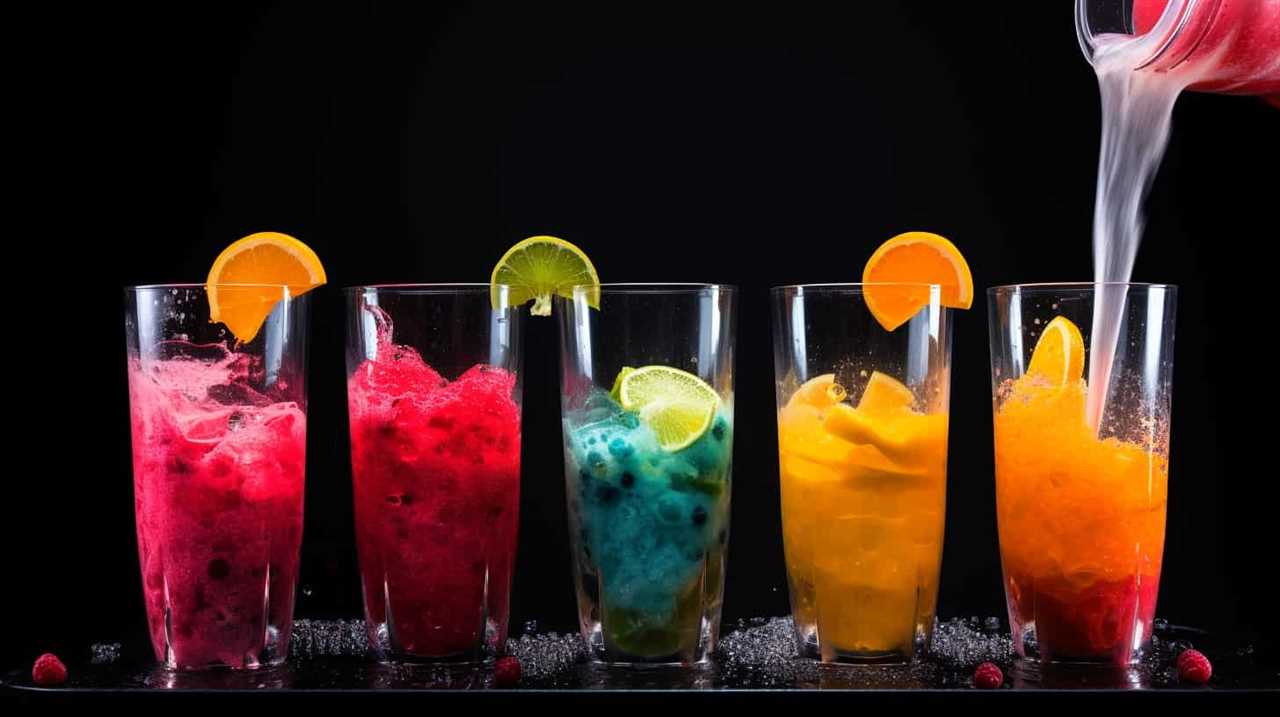
When it comes to orange juice, color is a crucial factor to consider. As oranges are exposed to air, an oxidation process occurs, which leads to changes in color. Fresh orange juice has a vibrant orange hue, indicating its freshness and high nutritional value.
However, as time passes, the juice may undergo a color change, turning dull or brownish. This change in color is a result of the oxidation process, which affects the flavor and quality of the juice. It’s important to note that while a change in color doesn’t necessarily mean the juice is bad, it does indicate that the juice is losing its freshness and shelf life extension.
Therefore, it’s advisable to consume orange juice when it’s at its freshest, as indicated by its vibrant orange color.
Strange Smells in Orange Juice
When it comes to evaluating orange juice, we should be cautious of any strange smells or odors. A fresh, pleasant smell is indicative of good quality orange juice. However, if you notice any unusual or off-putting odors, it may be a sign that the juice has gone bad. These smells can range from a sour or fermented scent to a rancid or moldy aroma.
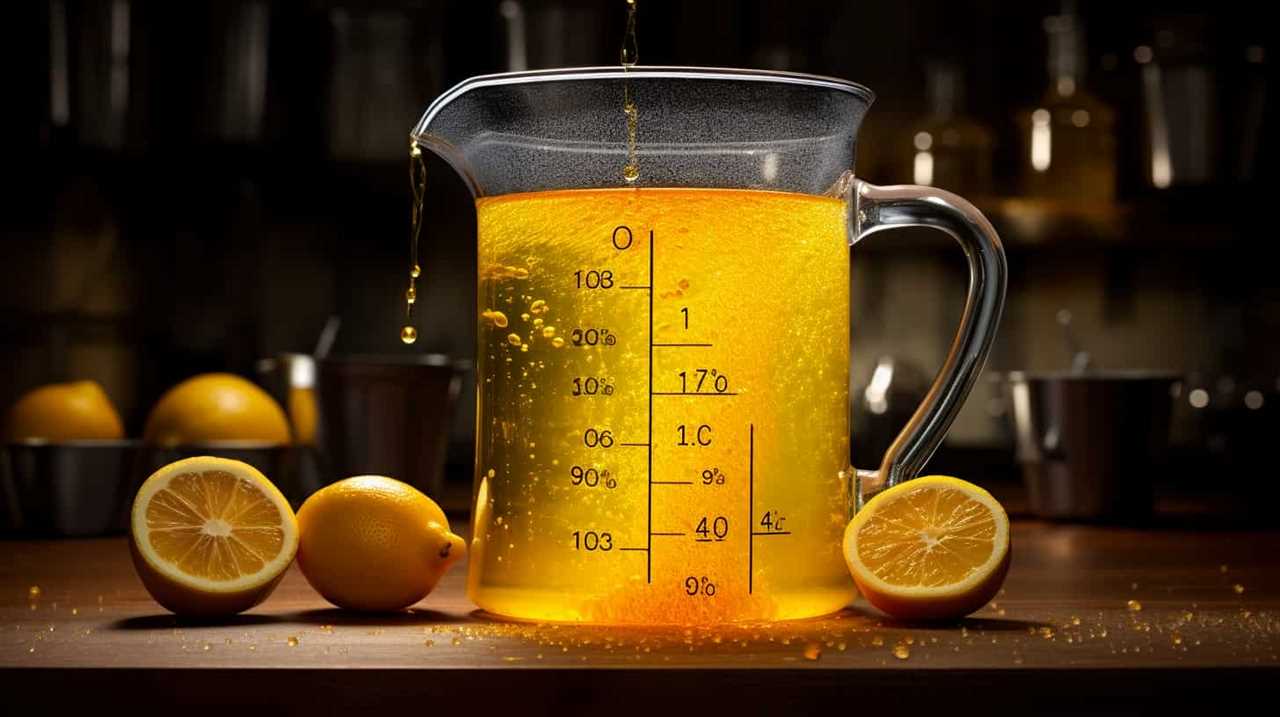
It’s important to note that while some natural variations in scent can occur due to the specific variety of oranges used, any strong or unpleasant smells should raise concerns. If you have citrus fruit allergies, it’s especially important to pay attention to the smell of orange juice, as it could indicate the presence of spoilage or contamination.
Ensuring the quality of orange juice is essential as it’s a popular beverage known for its health benefits, including being rich in vitamin C and antioxidants.
Off Taste of Orange Juice
Our taste buds can detect even the slightest hint of an off taste in orange juice, which can indicate that it has gone bad. The taste of orange juice should be fresh, tangy, and slightly sweet. If it tastes sour, bitter, or fermented, it’s likely spoiled.
One common cause of an off taste in orange juice is the use of overripe oranges. When oranges become overripe, their flavor profile changes, resulting in a less pleasant taste. Another factor to consider is the expiration date. Orange juice that has passed its expiration date is more likely to develop an off taste. It’s important to check the expiration date before consuming orange juice to ensure its freshness and quality. Additionally, improper storage conditions, such as leaving the juice at room temperature for extended periods, can lead to the development of unpleasant flavors. Storing orange juice in the refrigerator helps maintain its freshness for longer. For those exploring different juice options, aloe vera juice flavor tips suggest pairing tart juices with milder flavors to balance the overall taste.
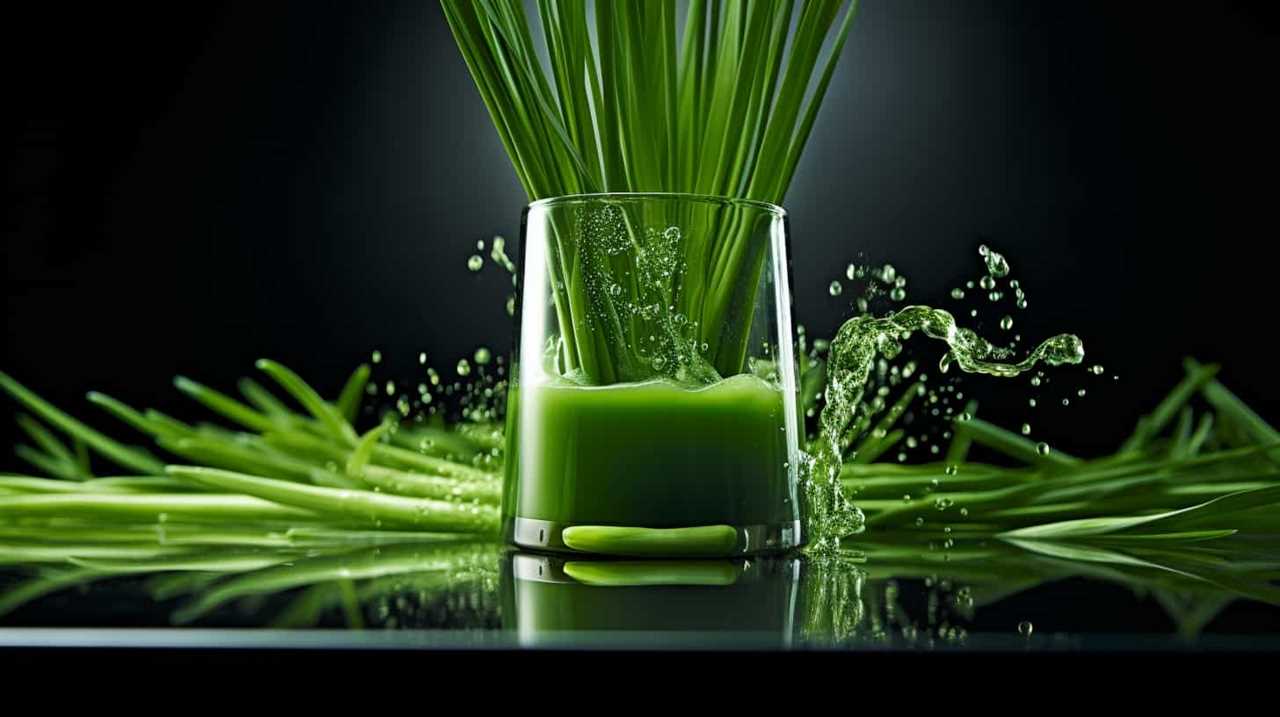
Now, let’s move on to discuss the texture changes in orange juice.
Texture Changes in Orange Juice
As we explore the texture changes in orange juice, it’s important to note that certain factors can cause it to become thicker or develop sediment. One common texture change in orange juice is pulp separation, where the pulp separates from the liquid and settles at the bottom. This can occur naturally over time, as the pulp particles become denser and sink.
Another factor that can affect the texture of orange juice is the expiration date. As orange juice ages, it may start to develop a thicker consistency and even form sediment. This is a result of the natural breakdown of the juice’s components. Therefore, it’s crucial to check the expiration date on orange juice and consume it before it reaches its expiration date to avoid any undesirable texture changes.
Mold or Growth in Orange Juice
We need to be aware of the possibility of mold or other growth occurring in orange juice. Mold can develop in orange juice if it isn’t stored properly or if it has passed its expiration date.
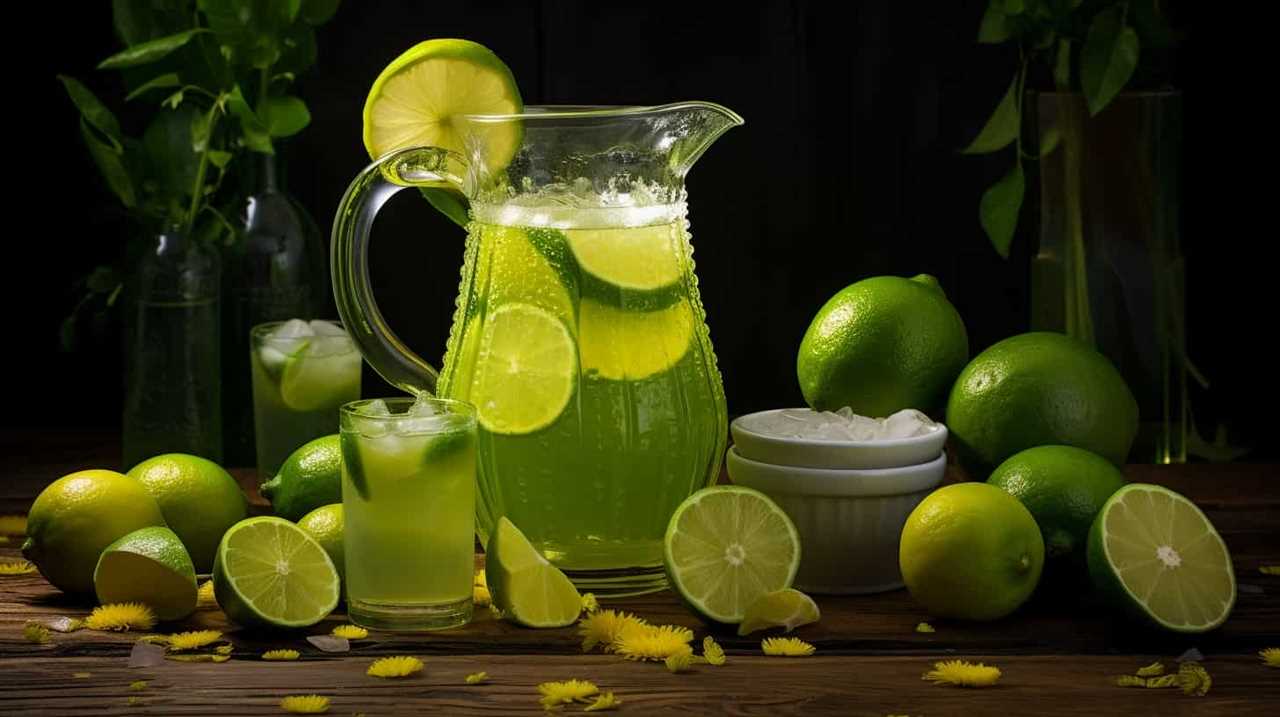
To prevent mold growth, it’s important to follow these steps:
- Store orange juice in the refrigerator at a temperature below 40°F (4°C).
- Check the expiration date on the bottle before consuming. Discard any orange juice that has expired.
- Keep the container tightly sealed to prevent air and moisture from entering, as these can promote mold growth.
Regularly inspecting orange juice for any signs of mold or unusual growth is essential. If you notice any discoloration, a strange odor, or visible mold, it’s best to discard the juice to avoid any potential health risks.
Frequently Asked Questions
Can Orange Juice Go Bad if It’s Stored in the Freezer for Too Long?
Frozen orange juice can potentially lose its nutrients and change its taste if stored in the freezer for too long. It is important to check for signs of spoilage before consuming it.
How Long Can Orange Juice Stay Fresh in the Refrigerator Once It’s Opened?
Once opened, orange juice can stay fresh in the refrigerator for about 7-10 days. To maintain its freshness, store it properly by keeping it tightly sealed and at a consistently cold temperature. If the orange juice develops an off odor, flavor, or appearance, it’s best to discard it to avoid any potential health risks. Factors like exposure to air and varying temperatures can influence how long orange juice lasts, so it’s crucial to handle it with care. Always check the expiration date as a general guide, but remember that proper storage can extend its freshness slightly. Additionally, avoid leaving the orange juice out at room temperature for extended periods, as this can significantly shorten how long orange juice lasts. Freezing the juice can be another option to extend its shelf life, but be aware that this may alter its texture and taste once thawed. By following these precautions, you can ensure your orange juice stays fresh and safe to consume.
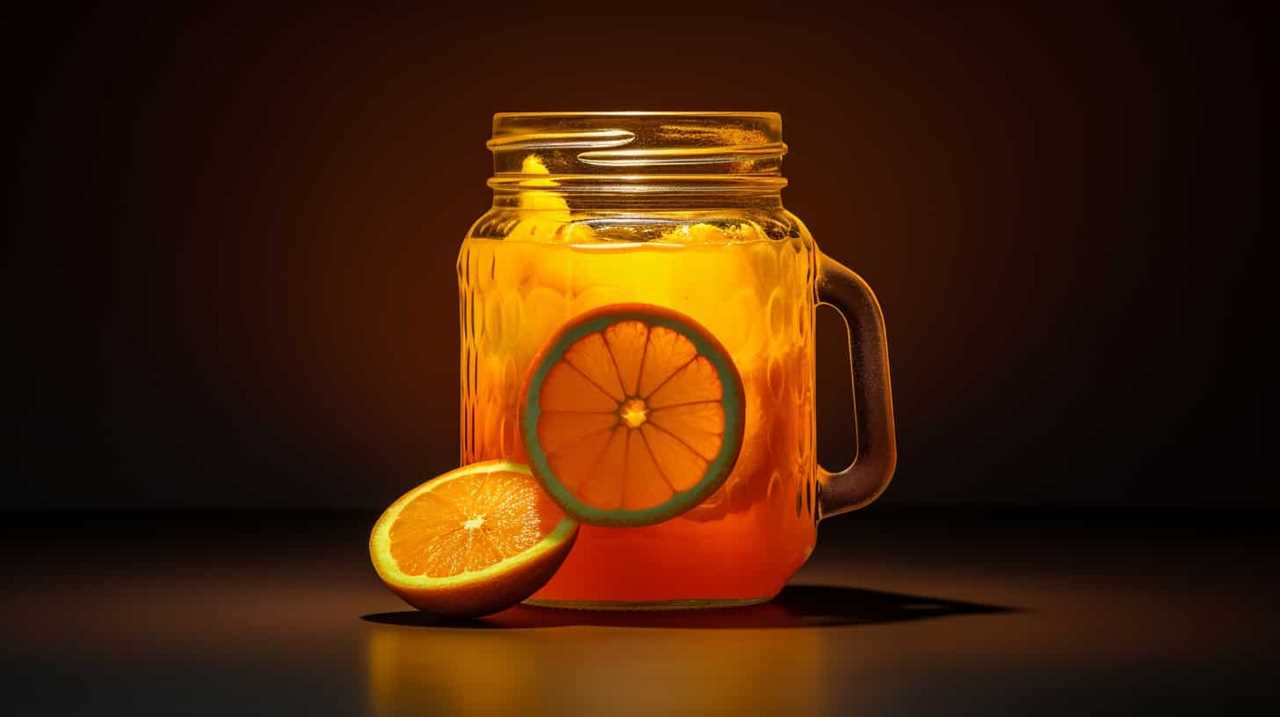
Is It Safe to Consume Orange Juice That Has Been Left Out at Room Temperature Overnight?
Left out orange juice may not be safe to drink as it can harbor harmful bacteria. Signs of spoiled orange juice include a sour smell, mold growth, and a change in color or taste.
Can Orange Juice Develop Harmful Bacteria if It’s Past Its Expiration Date but Still Looks and Smells Fine?
Orange juice can cause food poisoning if it develops harmful bacteria, even if it looks and smells fine. Signs of spoiled orange juice include a sour smell, mold growth, and a change in color or taste.
Does the Nutritional Value of Orange Juice Decrease as It Starts to Go Bad?
As orange juice goes bad, its nutritional value decreases. The longer it sits on the shelf, the more nutrients it loses. Signs of spoilage include a sour smell, off taste, and mold growth.
Conclusion
In conclusion, determining if orange juice is bad requires careful observation of color changes, strange smells, off taste, and texture changes. Just like a detective investigating a case, we must rely on our senses to detect any signs of spoilage.
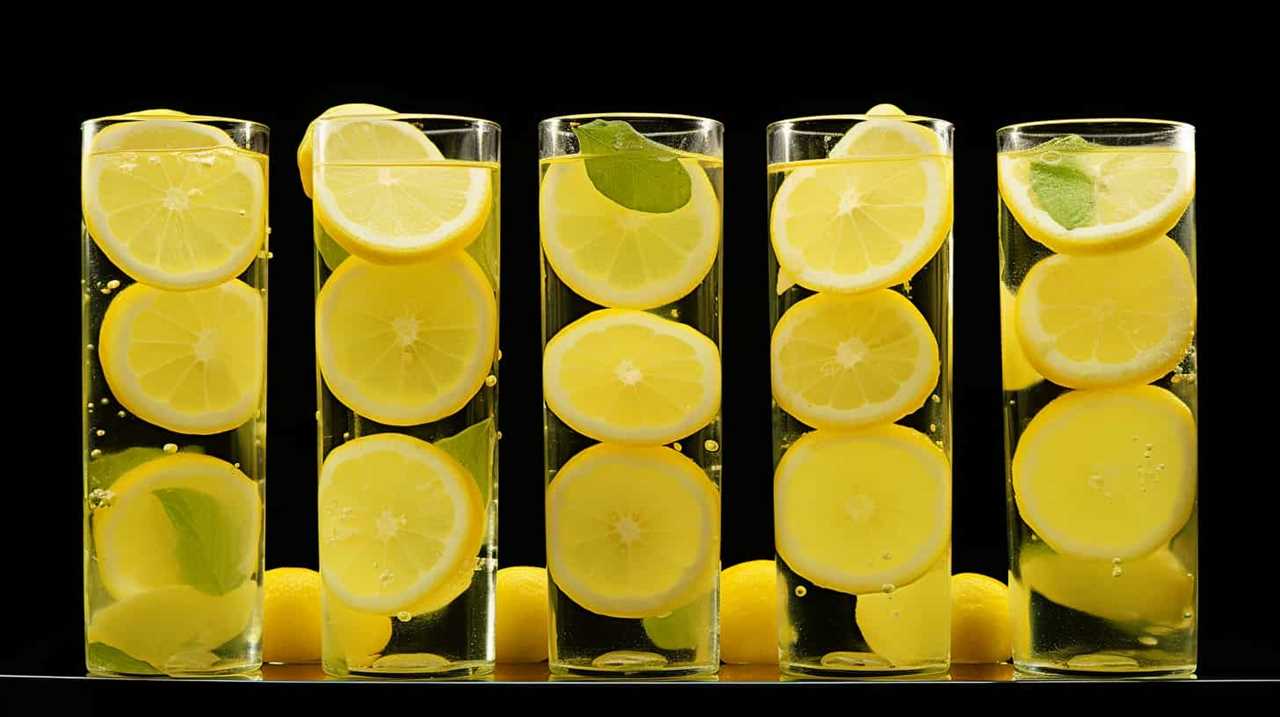
If we detect mold or growth in the orange juice, it’s a clear indication that it’s no longer safe to consume. By remaining vigilant and attuned to these indicators, we can ensure that our orange juice is always fresh and enjoyable.
Susannah expertise lies in researching and compiling evidence-based content on juicing, nutrition, and overall health. She is committed to ensuring that The Juicery World offers accurate, up-to-date, and trustworthy information to empower readers to take control of their health. Susannah’s goal is to inspire individuals to embrace juicing as a way to nourish their bodies and live their best lives.
-

 Vetted2 months ago
Vetted2 months ago15 Best Juices for Diabetics: Refreshing Options That Won’t Spike Your Blood Sugar
-

 Vetted2 months ago
Vetted2 months ago15 Best Decaf Coffee Options for Flavor Lovers Who Need a Caffeine Break
-

 Vetted2 months ago
Vetted2 months ago15 Best Espresso Ground Coffees to Elevate Your Morning Brew
-

 Vetted2 months ago
Vetted2 months ago15 Best K-Cup Coffee Pods for a Perfect Brew Every Time
-

 Vetted2 months ago
Vetted2 months ago15 Best Beans for Espresso: A Guide to Perfecting Your Brew
-

 Vetted2 months ago
Vetted2 months ago15 Best Inexpensive Espresso Machines That Brew Quality Coffee on a Budget
-

 Vetted2 months ago
Vetted2 months ago15 Best Kona Coffees to Savor the Rich Flavors of Hawaii
-

 Vetted2 months ago
Vetted2 months ago15 Best Cold Brew Coffees to Keep You Refreshed All Summer Long





